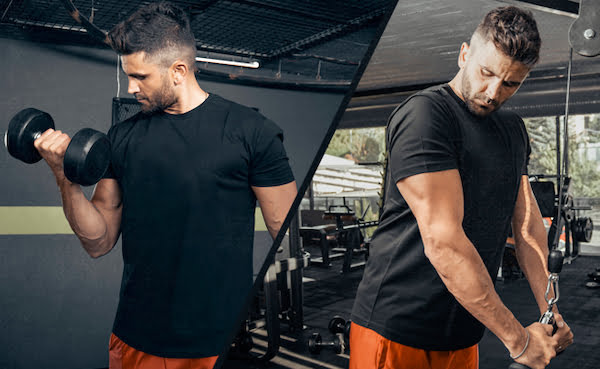You’re a busy man. You’ve got work and community obligations. You want to spend quality time with your family and friends. Maybe you’ve made it a goal to read more books this year.
How can you fit in a workout with so much on your plate? Supersets. The answer is supersets.
What Is a Superset?
A superset is a specific type of workout set wherein you perform two separate exercises back to back without rest between them. There are three different types of supersets:
- Antagonist supersets: Supersets involving two exercises that work opposing muscle groups. For example, chest press followed immediately by back rows, or leg extensions followed immediately by leg curls.
- Alternate-peripheral supersets: Supersets involving two exercises alternating between upper and lower body movements. For example, a squat followed immediately by the bench press, or a deadlift followed immediately by a shoulder press.
- Compound supersets: Supersets involving two exercises that work the same muscle groups using similar movements. For example, tricep extensions followed immediately by tricep pulldowns, or a barbell bench press followed immediately by a dumbbell bench press.
The type of superset you choose will depend on your overall goals for training. We’ll walk you through how to determine which superset scheme to use here in a bit.
Typically, when you perform a superset, you do the two exercises back to back without any rest. After completing the second exercise in each pair, you then take a rest break before doing your next superset. A standard rest interval between weightlifting sets is about two minutes. When you’re doing supersets in which the first and second exercises in the pair work different muscle groups, the muscles worked by the first exercise will have already gotten some rest while you performed the second exercise, so you may be able to take a rest break that’s a little shorter than that.
If you’re prioritizing conditioning over strength, or it’s a one-off situation when you’re especially pressed for time, you can skip the break between supersets altogether and keep going until you’ve completed your prescribed sets and reps. Supersets without breaks are a great option for a day when you only have 15 minutes available for a workout.
The Benefits of Supersets
Supersets save you time. The primary benefit of supersets is that they save time. Instead of resting between exercises, you move immediately into the next exercise. While you take a short rest after you’ve completed a superset, you still end up saving time by doing two exercises back to back.
Supersets get your heart rate up. Because you’re not resting between exercises, supersetting makes for a tremendous metabolic conditioning workout. Your heart rate gets going and you get nice and sweaty. Great for burning calories.
Read the full article here.





